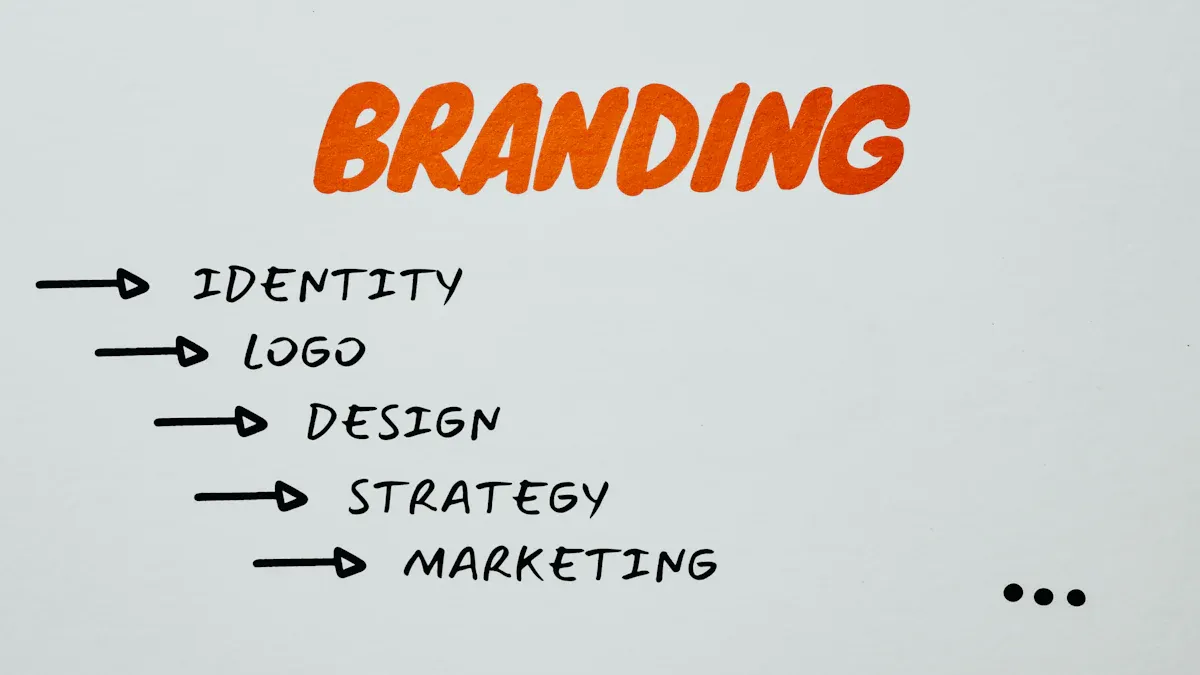
Visual Storytelling for Pitch Decks That Win Over Investors
Table Of Contents
Investors often sift through dozens, sometimes hundreds, of pitch decks weekly. It’s a known fact that the human brain processes visual information significantly faster than text, making that first visual impression absolutely critical. This isn’t just about aesthetics; it’s about leveraging the psychology of perception to make your message resonate and stick. Mastering the art of visual storytelling in your pitch deck can genuinely be the difference between securing that crucial meeting and getting lost in an overflowing inbox.
The Psychological Edge of Visuals in Investor Pitches
Why do visuals hold such sway in an investor pitch? It boils down to how our brains are wired. Investors, faced with limited time and numerous proposals, rely heavily on mental shortcuts or heuristics to quickly assess potential. A visually clear and compelling deck immediately signals professionalism and clarity of thought. This reduces the cognitive load on the investor, freeing up mental energy to absorb the substance of your pitch rather than struggling to decipher dense text.
Think about the last time you encountered a wall of text versus a clean infographic. Which one felt easier to grasp? Text-heavy slides demand significant effort, increasing the risk that key messages get overlooked or misinterpreted. In contrast, effective pitch deck visuals guide the eye and communicate complex ideas almost instantaneously.
Beyond clarity, visuals forge a powerful emotional connection. A well-chosen image showing the tangible impact of the problem you solve, or a photograph capturing your team’s genuine passion, can evoke empathy far quicker than paragraphs of description. This emotional resonance makes investors more receptive to your narrative and more likely to remember your venture.
Furthermore, polished design acts as a subtle yet potent signal of trust and credibility. It suggests meticulousness, attention to detail, and a serious commitment to the venture. Investors interpret this visual competence as a proxy for overall business diligence. These psychological advantages—capturing attention, fostering emotional connection, and building subconscious trust—are why visual storytelling is fundamental for winning investor presentations.
Foundational Elements of Visual Storytelling for Pitch Decks
Before you even think about choosing specific images or charts, laying the right groundwork is essential. Powerful visual storytelling isn’t just about pretty pictures; it’s built on a strategic foundation. Neglecting this preparation means your visuals might look good but lack real impact.
Defining Your Core Narrative Arc
Your story must come first. What is the problem you’re solving? What’s your unique solution? Who is the market, who is your team, and what is your ultimate vision? Visuals are there to support and enhance this narrative, not compensate for a weak one. A compelling story provides the structure; the visuals bring it to life. Without a clear arc, even the most stunning graphics will feel disjointed.
Consistency in Visual Language
Imagine reading a book where the font changes every chapter. Confusing, right? The same applies to your pitch deck. Establishing a consistent visual language through a simple style guide—defining your color palette, typography, image style, and logo usage—is crucial. This consistency reinforces your brand identity, projects professionalism, and makes the information easier for investors to process. This is where integrating design and psychology, a core focus at LaunchBox, helps establish a cohesive and memorable brand presence from the start. Strong investor pitch deck design relies on this uniformity.
Simplicity and Clarity: Less is More
Investors value their time. Each slide, and every visual element on it, must serve a clear purpose. Avoid clutter at all costs. Think of each slide as a billboard – conveying one key message quickly and effectively. Simplicity aids rapid comprehension, allowing investors to grasp your points without getting bogged down in unnecessary detail. Ask yourself: does this visual add clarity, or does it just add noise?
Authenticity in Visual Choices
Generic stock photos scream impersonal. Investors see them constantly, and they often undermine credibility. Choose visuals that genuinely reflect your brand, your specific industry, the problem you’re addressing, and your target audience. Are you showing your actual product? Your real team? Contextual images that feel authentic build a stronger connection and make your story more believable. Resist the urge to use visuals just because they look slick; ensure they are relevant and true to your venture.
These foundational elements—a strong narrative, visual consistency, simplicity, and authenticity—are the non-negotiable pillars for creating a truly impactful visual storytelling pitch deck.
Essential Visual Components for an Impactful Pitch Deck
With a solid foundation in place, you can start selecting the specific visual ingredients for your pitch deck. Choosing the right components and using them effectively transforms your presentation from a mere collection of slides into a persuasive visual narrative.
High-Quality Photography and Illustrations
The difference between professional and amateur visuals is immediately apparent. Use high-resolution photography to add tangibility and authenticity – think compelling shots of your product in action, your actual team members, or the real-world context of the problem you solve. Illustrations, on the other hand, are excellent for visualizing abstract concepts, service flows, or future possibilities where photos might fall short. Ensure the style aligns with your brand personality.
Data Visualization Done Right
Numbers tell a story, but only if presented clearly. The goal of data visualization in a pitch deck is to make complex information like market size, user traction, or financial projections instantly digestible. Choose the right chart type for the story you want to tell – bar charts for comparisons, line charts for trends, pie charts for proportions. Effective data visualization, as emphasized by resources like Stephen Few’s work on practical data presentation, prioritizes clarity and avoids distortion. Ensure your charts are clean, accurately labeled, and easy to understand at a glance. Avoid anything that looks like it might be hiding or misrepresenting information.
Strategic Use of Color Psychology
Colors evoke subconscious emotional responses. Blue often conveys trust and stability, green suggests growth or environmental focus, while red can signal urgency or warning. Use color intentionally, aligning your palette with your brand identity and the specific message of each slide. Understanding design psychology, a key aspect of how we approach branding at LaunchBox, helps ensure your color choices subtly reinforce your narrative and desired investor perception.
Typography that Speaks Volumes
Your font choices significantly impact readability and brand personality. Serif fonts (like Times New Roman) often feel more traditional and formal, while sans-serif fonts (like Arial or Helvetica) tend to appear modern and clean. Limit yourself to one or two font families to maintain consistency. Ensure text is large enough to be legible, even from a distance, and use variations in size and weight (bolding) strategically to create hierarchy and emphasize key points.
Icons and Graphics for Enhanced Comprehension
Simple icons and graphics are powerful tools for breaking up text, highlighting key features or benefits, illustrating process steps, and guiding the investor’s eye. They improve scannability and can make complex information feel more approachable. Maintain a consistent icon style throughout your deck that matches your overall visual language.
Choosing the right visual component is crucial. This table offers a quick guide:
| Visual Component | Primary Purpose | Best Use Cases | Key Consideration |
|---|---|---|---|
| Photography | Build authenticity, show tangibility | Team members, product shots, real-world context, customer stories | High resolution, relevance, avoid generic stock |
| Illustrations | Explain concepts, visualize processes | Abstract ideas, service flows, future states, brand personality | Style consistency, clarity, professional quality |
| Charts & Graphs | Simplify data, show trends | Market size, financial projections, user growth, comparisons | Accuracy, appropriate chart type, readability |
| Icons & Graphics | Enhance scannability, highlight points | Breaking up text, feature lists, process steps, navigation | Simplicity, style consistency, clear meaning |
Mastering these components and knowing when to use each is central to delivering effective pitch deck storytelling tips that resonate with investors.
Weaving Your Narrative Visually Slide by Slide
Knowing the components is one thing; applying them strategically throughout your pitch narrative is where the magic happens. Each slide serves a specific purpose in your story, and the visuals should be tailored accordingly to maximize impact.
-
The Problem Slide: Visualizing the Pain Point
Your goal here is to make the problem feel real and urgent. Use impactful photography showing the negative consequences of the problem, a simple diagram illustrating friction points in a current process, or even a strong visual metaphor. Make the investor feel the pain your potential customers experience.
-
The Solution Slide: Show, Don’t Just Tell
This is where you demonstrate how your product or service alleviates the pain. Use clean product mockups, screenshots of key features, simple UI flow diagrams, or perhaps before-and-after visuals. The visuals should clearly communicate how your solution works and the benefits it delivers, making it instantly understandable.
-
Market Opportunity: Illustrating Scale and Scope
Investors need to see the potential. Use clear, uncluttered charts—perhaps a pie chart for market share, a bar chart for growth trends, or a standard TAM/SAM/SOM diagram. Simplified infographics can also work well. The visual should make the market size and your potential within it easily graspable and compelling.
-
Team Slide: Humanizing Your Greatest Asset
Investors invest in people as much as ideas. Use professional, yet warm and approachable headshots of your core team. Consider a layout that implies collaboration. You might use subtle icons next to names to denote key areas of expertise (e.g., tech, marketing, finance). The visual goal is to build trust and convey competence.
-
The Ask and Future Vision: Inspiring Confidence Visually
Clearly communicate what you need and why. A simple graphic illustrating how the funds will be allocated can be very effective. For the future vision, use aspirational but grounded imagery or graphics—perhaps a visual roadmap, an upward trending graph (based on realistic projections), or imagery representing expansion. The visuals should reinforce the opportunity and inspire confidence in your plan.
Applying a deliberate visual strategy slide by slide ensures your narrative flows logically and persuasively, creating a cohesive and memorable visual storytelling pitch deck.
Critical Visual Blunders That Can Sink Your Pitch
Even with the best intentions, certain visual mistakes can severely undermine your pitch deck’s effectiveness and damage your credibility with investors. Being aware of these common pitfalls is the first step to avoiding them.
- Overcrowding Slides: Packing too much text or too many visuals onto a single slide creates cognitive overload. Investors won’t know where to focus, and your key messages will get lost in the noise. Simplicity is paramount.
- Inconsistency: Using different fonts, color palettes, or image styles throughout the deck looks unprofessional and careless. It confuses the brand identity and makes the presentation harder to follow. Consistency signals diligence.
- Low-Quality or Irrelevant Imagery: Pixelated photos, cheesy stock images, or visuals that don’t clearly relate to your point make your venture seem amateurish and out of touch. It suggests a lack of effort or understanding. Authenticity and quality matter.
- Poor Readability: Text that’s too small, illegible font choices, or low contrast between text and background forces investors to strain. If they can’t easily read your slides, they’ll miss crucial information and likely become frustrated. Clarity ensures comprehension.
- Confusing Data Visualizations: Charts that are overly complex, poorly labeled, or use inappropriate formats (like a 3D pie chart) don’t clarify—they obscure. This can damage your credibility and even raise suspicions that you’re trying to hide something. Honesty in data presentation is key.
Avoiding these blunders is crucial for maintaining professionalism and ensuring your message is delivered clearly. Well-executed, effective pitch deck visuals build trust; poorly executed ones destroy it.
Enhancing Your Visuals: Approaches and Considerations
Creating a visually compelling pitch deck doesn’t necessarily require a massive budget or advanced design skills, but it does require thoughtful consideration. There are several paths you can take to achieve a professional result.
Leveraging pre-designed templates can be a good starting point, offering structure and saving time. However, relying too heavily on a generic template risks making your pitch look indistinguishable from countless others. The key is to customize templates significantly to reflect your unique brand identity, narrative, and visual language. Think of a template as a scaffold, not the finished building.
For high-stakes presentations or if design isn’t your team’s strong suit, investing in professional design input can be invaluable. Designers understand visual hierarchy, typography, color theory, and how to translate complex ideas into clear visuals. Specialized services, like LaunchBox, go a step further by integrating design principles with psychological insights to ensure your visuals not only look good but also resonate deeply and persuasively with investors. This approach can provide a distinct competitive edge for crafting truly effective investor pitch deck designs.
Remember that visual design is often an iterative process. Don’t expect perfection on the first try. Seek feedback from mentors, advisors, and even potential investors if possible. Ask them specifically about the clarity and impact of your visuals. Use this feedback to refine and improve your deck. Visual storytelling gets stronger with iteration.
Ultimately, whether you use templates, hire professionals, or take a DIY approach, the goal remains the same: create a visually coherent and compelling story that clearly communicates your value proposition and resonates with investors. This thoughtful approach is what leads to more winning investor presentations.











